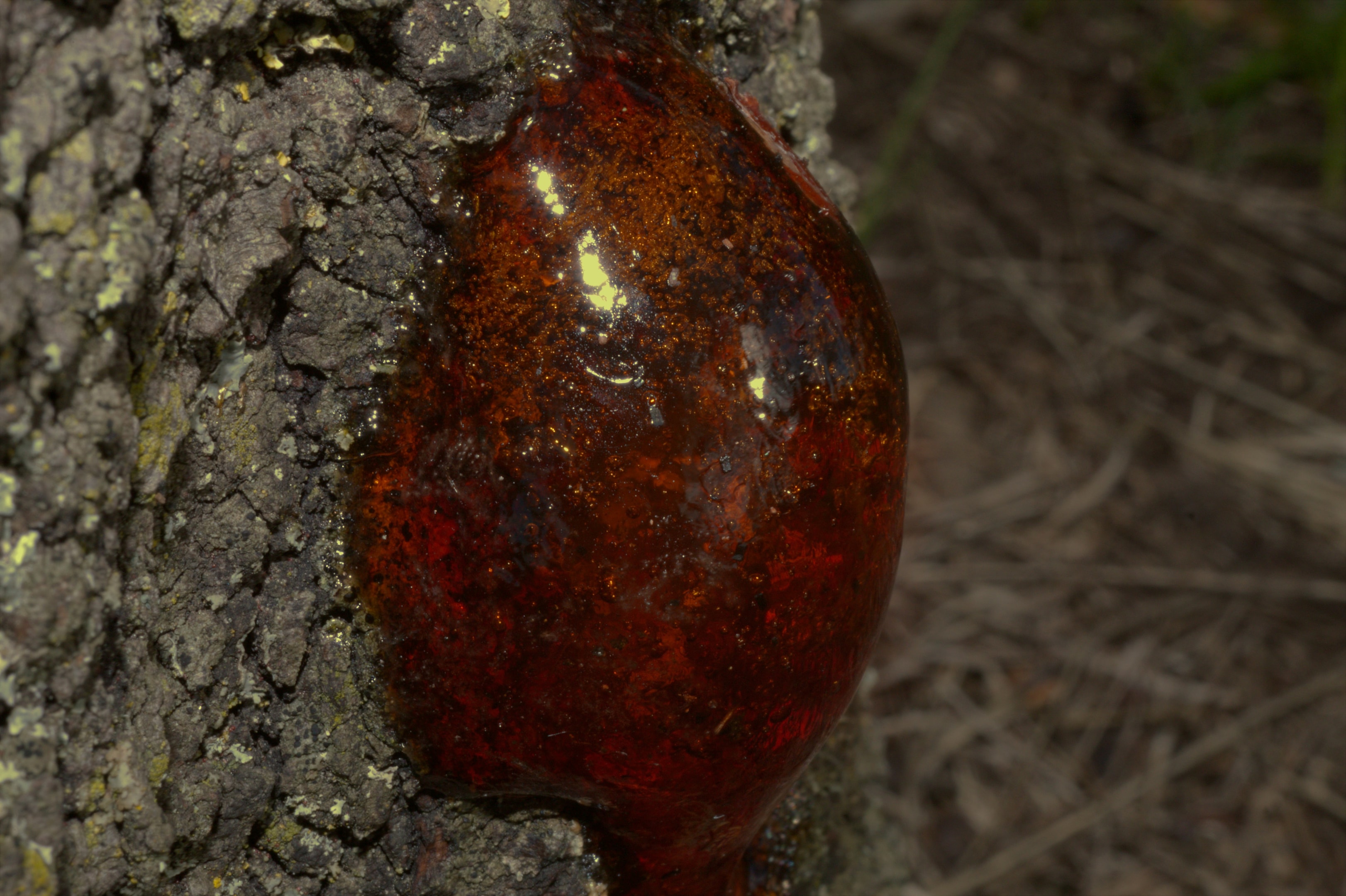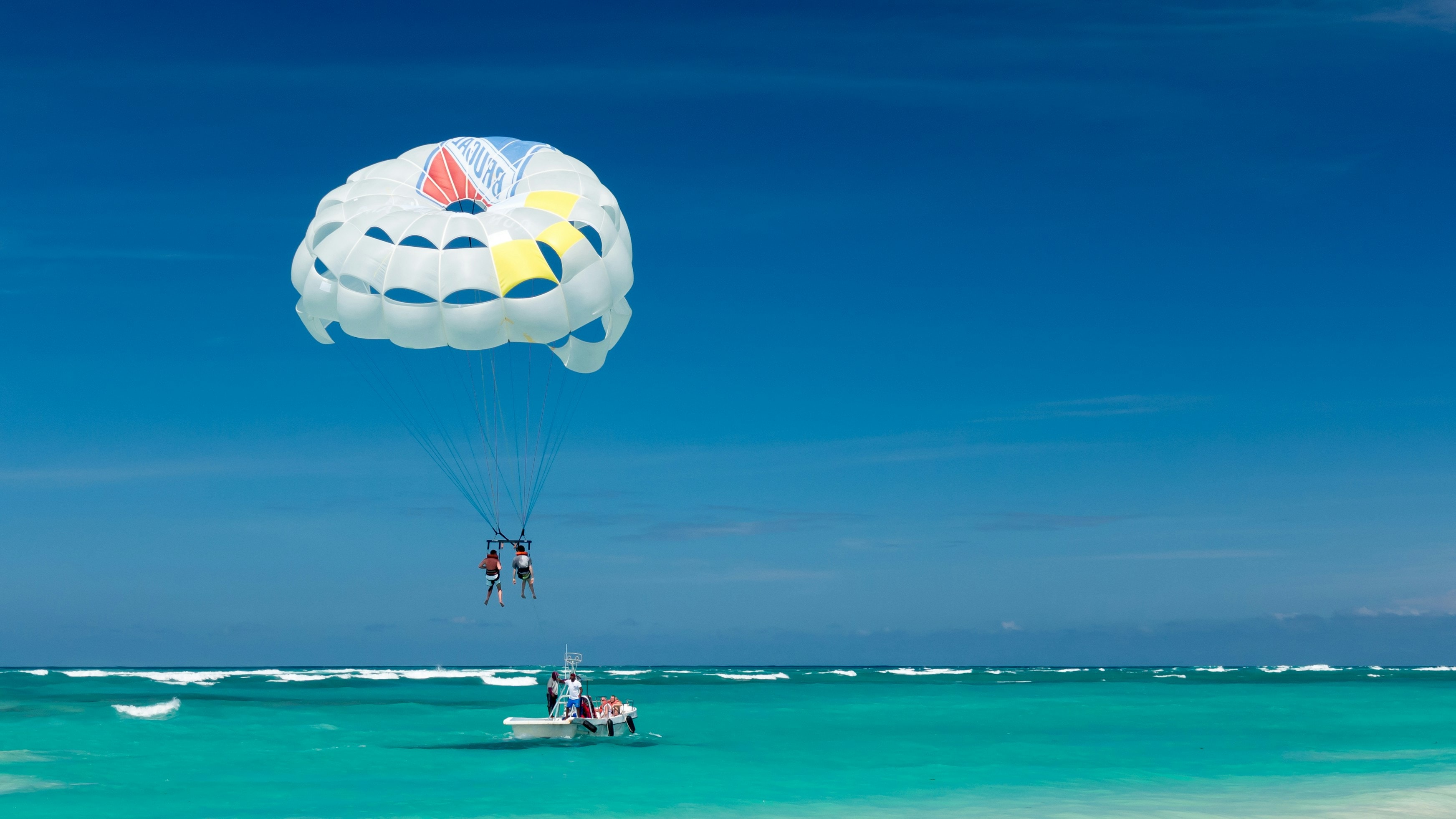| Key Facts About the Dominican Republic |
Details |
| Population(2025) |
11,535,018 |
| Official Language |
Spanish |
| Currency |
Dominican Peso |
| Capital |
Santo Domingo |
| Area |
18,704 square miles(48,670 km2) |
| Main Religion |
Christianity |
Explore this island nation’s fascinating culture with these 14 Dominican Republic interesting facts.
>>>EXPERIENCE THE DOMINICAN REPUBLIC: Marine Life and Coastal Restoration

Rustic Pathways students visit the first cathedral in the Americas, the Cathedral of Santa María la Menor.
1. The Dominican Republic’s capital city of Santo Domingo is a city of historical firsts
In 1492, Christopher Columbus landed in the present-day Dominican Republic during his first voyage. Christopher Columbus came to the island after visiting what is now the Bahamas. A few years later, the first permanent European settlement in the Americas was built in the current capital of Santo Domingo.
The Colonial City includes the first Catholic cathedral in Central America as well as the first university and hospital. The area is also known as the Colonial Zone and it is a designated UNESCO World Heritage site. This area is laid out in a grid pattern that became a model for other towns built in the Americas.
The Colonial Zone is on the west bank of the Ozama River that divides the city. A perimeter wall surrounds the area, which covers 0.41 square miles.
Today the Dominican Republic’s governmental and commercial centers are in a more modern part of the city. However, the Colonial Zone was once a powerful hub for the Spanish. Its influence declined as the Spanish conquered other regions in North and South America.
Overall, the Colonial Zone has 300 historical sites. This includes:
- Basilica Cathedral of Santa María la Menor – the first cathedral in the Americas
- Casa del Cordón – thought to be the first stone house in the Americas
- Ruins of the Monasterio de San Francisco – the oldest monastery built in the Americas
- Fortaleza Ozama – the oldest European fortress built in the Americas
- Ruins of the Hospital San Nicolas de Bari – the first hospital built in the Americas
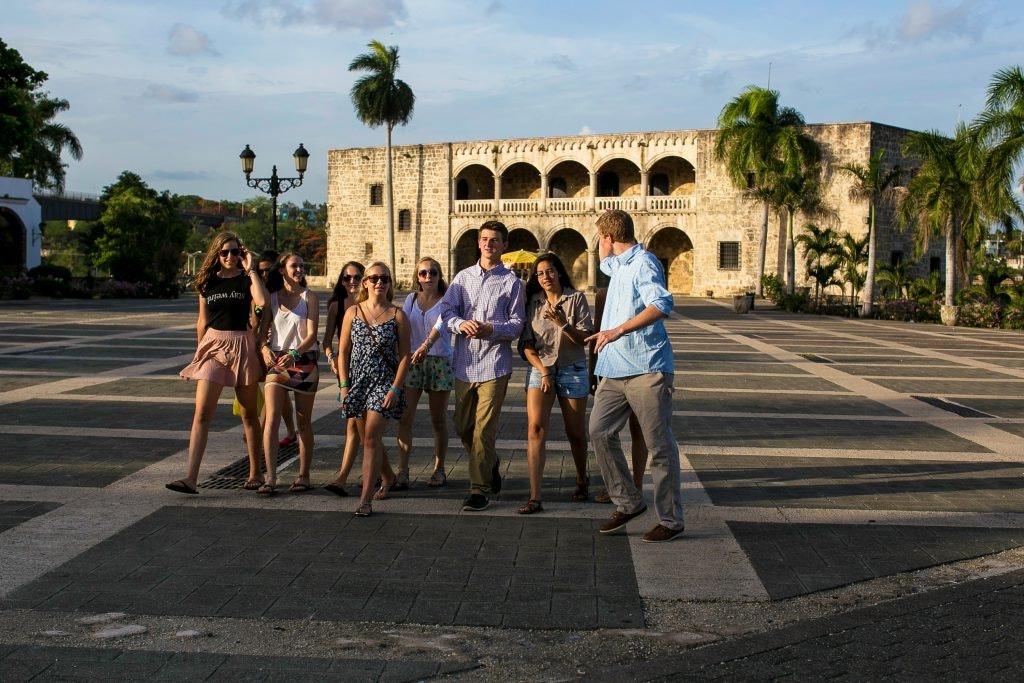
Spend a day getting to know the Colonial Zone of Santo Domingo. Copyright: © 2014 Rustic Pathways
Before the Spanish arrival, the Taino Indians had established communities on the island. They were known for their agricultural skills, but their influence declined after the Spanish arrived and conquered Caribbean territories.
2. The Dominican Republic has the Caribbean’s highest peak
The highest mountain peak in the Caribbean is Pico Duarte in the Dominican Republic, which reaches 10,417 feet (3,098 meters).
Pico Duarte is located within the Cordillera Central Mountain range and is named for Juan Pablo Duarte, one of the founding fathers of the Dominican Republic.
It takes a few days to hike to the peak but those who make it to the top will find a bust of Duarte himself, situated in front of the flag of the Dominican Republic and next to a large crucifix.
Pro Tip: Take the La Ciénaga hiking route for the quickest trip to Pico Duarte. It takes 2-3 days and is the most popular route. Arrange for your own guide to join you or visit as part of a guided tour if you require an English-speaking guide.
3. The Dominican Republic’s agricultural success has come at a cost
Today the Dominican Republic is a large producer of bananas, mangoes, sugar, coffee, cocoa, and tobacco. Much of that success has come on the back of Haitian migrants.
The country formed communities called bateyes where migrant sugar cane workers live. Many of these settlements are located in the province of San Pedro de Macoris.
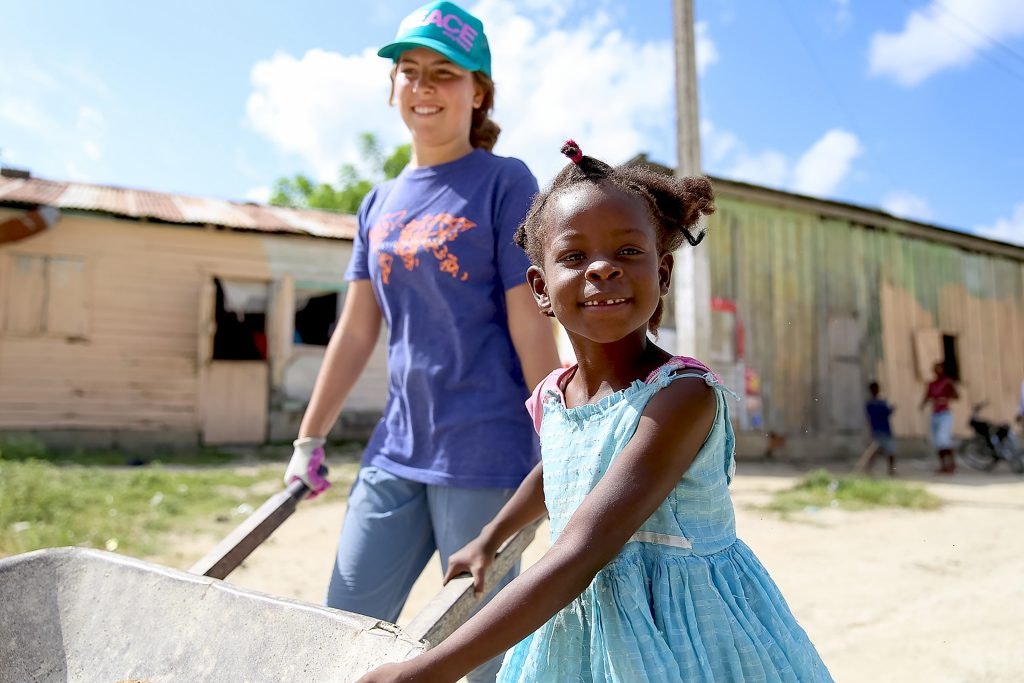
A Rustic Pathways student gets a helping hand while working on a service project in a bateyes community in the Dominican Republic. Copyright: © 2016 Rustic Pathways
The communities have substandard housing and lack necessary resources. They were built without running water, electricity, cooking facilities or bathrooms. They also did not have schools or proper healthcare.
Some nonprofits like the Rustic Pathways Foundation have stepped up to make improvements, but there’s still a long way to go.
4. Local Dominican people have fought to keep many cultural traditions alive
The indigenous Taino culture has been nearly wiped out in the Caribbean, but some artifacts and stone pottery can still be found on the islands.
The Taino had their own gods or spirits called zemis. Some of these gods are depicted in their indigenous artwork. Much of that art has been found deep in caves in places that are hard to access – often requiring crawling.
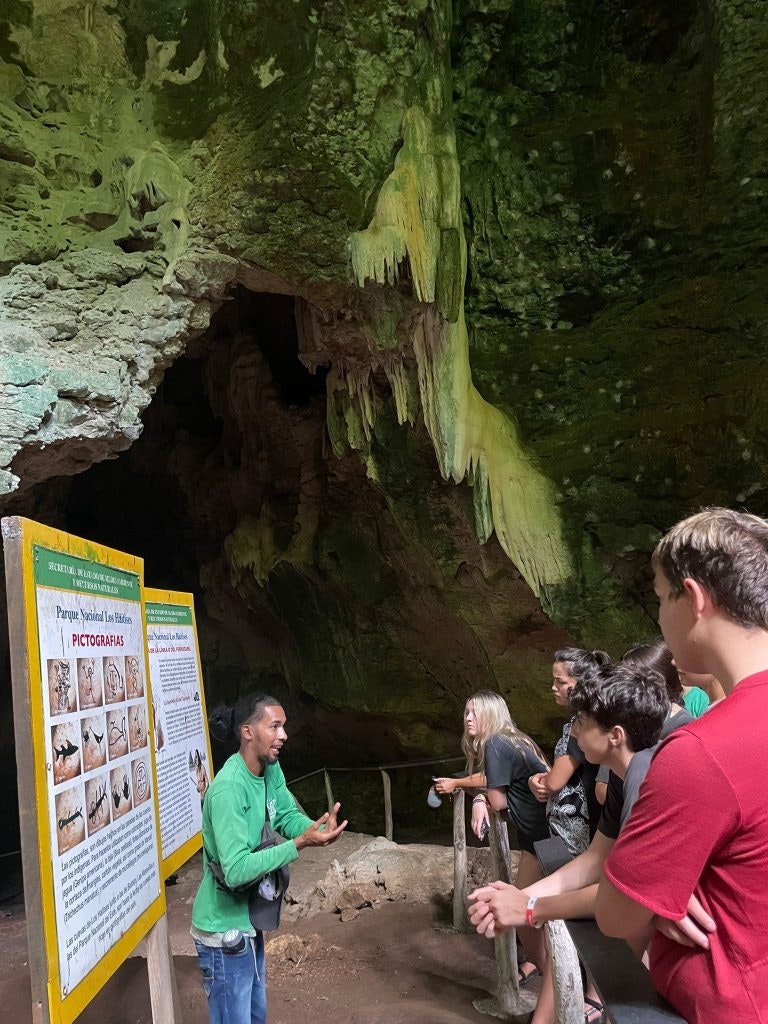
A guide in the Dominican Republic explains Taino cave art to some Rustic Pathways students.
Caves were considered sacred to the Tainos and were thought of as places where you could commune with the gods. Their artwork depicts animals, human-like figures, deities and seemingly abstract patterns.
The main god for the Tainos that’s featured in much artwork is Cohoba. He carried a plate on his head that contained a powder that the Tainos inhaled during religious ceremonies, causing hallucinations.
You may see limited examples of this type of artwork in the Dominican Republic, but other cultural aspects are more prevalent. This includes Afro-Caribbean culture. In Santo Domingo an organization called La Cofradía de Los Congos del Espíritu Santo, or The Congos of the Holy Spirit, thrives.
This cofradía or brotherhood creates music pieces and dances using popular Afro-Caribbean instruments like conga drums. This cofradía is one of the most important socio-cultural expressions in the Dominican Republic. It’s deeply rooted in the history, geography and culture of the country. The cofradía is particularly strong in the community of Mata Los Indios, Villa Mella in the capital.
You also can learn about African-descended migrants called Cocolos at a local museum in San Pedro de Macorís. Then you can stop by Rincón Cocolo, a migrant-founded restaurant that’s the only establishment in the country that serves traditional Cocolo Dominican cuisine.
On top of this, the Dominican Republic has many folklore legends. On the fun side are los menos or duendes, which are similar to elves that play jokes on people.
They may be blamed if there are strange noises in a house. They also have a frightening side since they’re said to be unkind to butterflies and steal unbaptized children to turn them into one of them.
Other folklore creatures in the Dominican Republic are said to be rather frightening in both appearance and behavior with everything from backward feet to long nails. These stories will make you watch your back if something goes bump in the night.
5. The Dominican Republic is a fabulous place to play music and dance
Two well-known dances began in the Dominican Republic. They are the rhythmic, fast-paced merengue and the slower bachata dance.
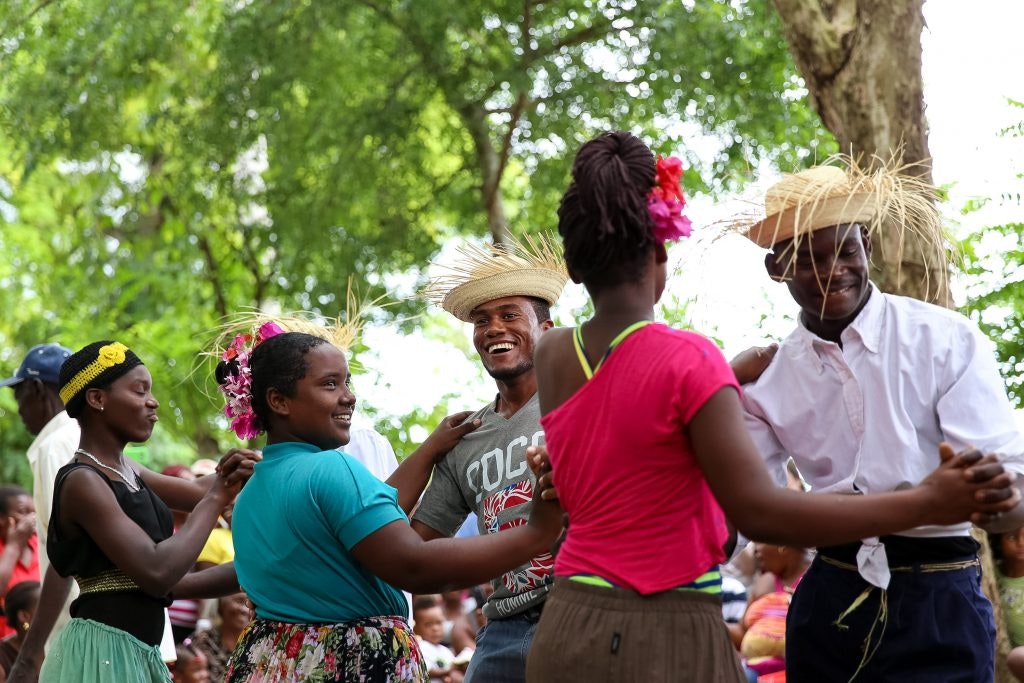
The Dominican Republic is known for its dancing and music. Copyright: © 2016 Rustic Pathways
Merengue is the national music and dance of the country. The instruments used for the music reflect the nation’s diverse cultural traditions. It utilizes an accordion that the Spanish introduced. A two-sided drum called a tambora comes from African traditions, and an instrument called a güira reflects Taino culture. It’s a metal cylinder with a handle and holes on the side. Musicians make sounds by running a brush across its surfaces.
The sax and bass guitar are also traditionally used in merengue music. The music has a 2/4 beat and is danced as a couple. The dance has one step per beat and includes a series of side and crossover steps, along with turns and more fast-paced moves.
The bachata dance is also a couple dance, which includes “lead and follow” elements and eight count side-by-side movements. There’s also a lot of hip movement in bachata dancing. You’ll see combinations that’ll include three steps with a Cuban hip motion, followed by a tap with a hip movement on the 4th beat.
These dances vary in their speeds, so you may decide to try one over the other depending on your dance skills. Regardless, both dances are cultural experiences to watch and try.
6. Religion plays a large role in the Dominican Republic
Roman Catholicism is the official religion in the Dominican Republic. The Catholic church receives government support, and Catholicism is taught in public schools. Overall, the nation has about five million Catholics, which represents about half of the population.
Most Haitians migrants are Christians, though a number of them are part of Protestant denominations. Some of them also practice Afro-Caribbean beliefs such as Santería. This faith focuses on the idea that everyone has a specific destiny. Those who practice Santeria also revere their ancestors.
Regardless, there are more than 600 Catholic churches in the Dominican Republic. The country is also the only nation in the world with a Bible on its national flag.
>> LEARN MORE: Currency in the Dominican Republic.
7. Marine life is abundant off the Dominican Republic’s coast
Eighty percent of the North Atlantic humpback whale population returns to the Dominican Republic to give birth every year, many of them in a humpback whale sanctuary. The country is also home to three species of endangered sea turtles – the green sea, hawksbill, and leatherback turtles.
Other marine life is also abundant, including several species of coral that form crucial coral reefs in the region. The health of the reefs and other aquatic animals is under threat from environmental issues. This includes pollution, overfishing, deforestation and natural disasters.
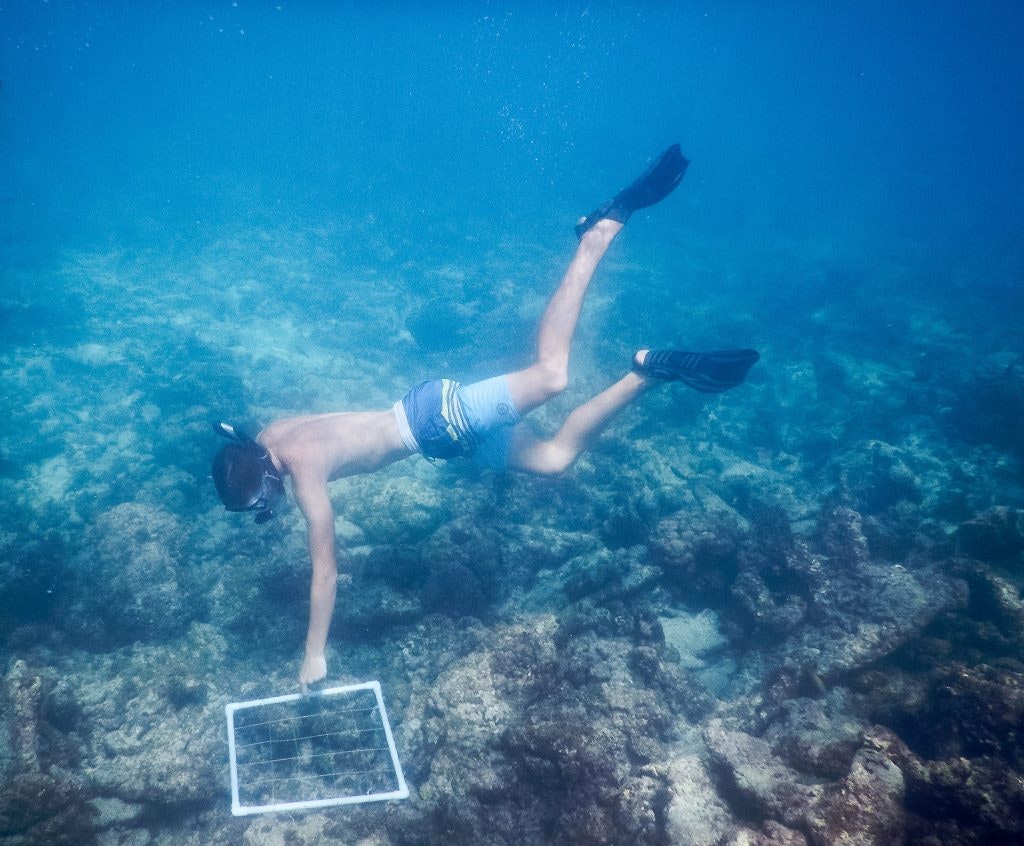
A Rustic Pathways student helps with a coral restoration project. Copyright: © 2016 Rustic Pathways
These challenges have reduced access to clean water and led to large declines in various animal species. West Indian manatees are among those impacted. The manatees or sea cows were abundant in the region for centuries until hunting and pollution took a major toll. By 2008 the Dominican Republic estimated there were less than 70 manatees left in its waters.
On the tiny size, the coral also has faced major threats. In the Caribbean it’s estimated that half of the coral reefs have died off in the last 30 years. In response, the Dominican Republic has launched marine conservation efforts and created more than 29 national parks to protect the land and promote environmental and sustainable tourism. The neighboring island of Puerto Rico shares many of the same threats.







